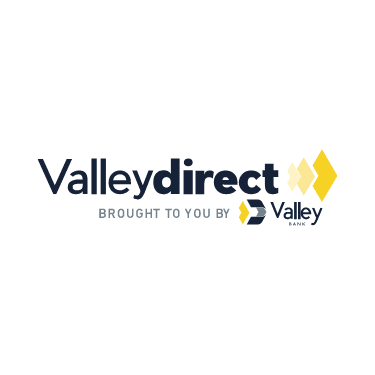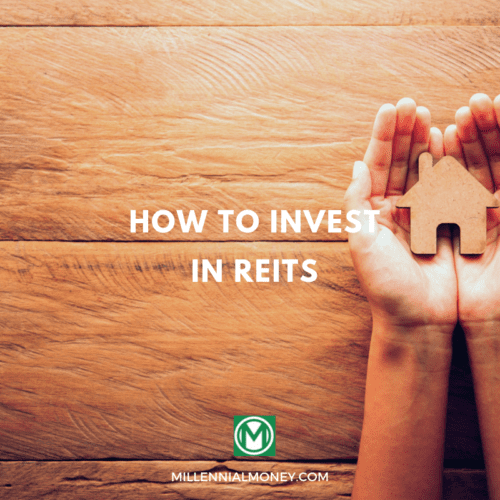In the grand scheme of things, $10,000 may not seem like a lot of money. After all, it won’t buy you a new car or a house. But if you think about your overall personal finance goals, investing $10,000 is a significant sum of money.
Each thousand that you rack up is ultimately a building block toward retirement and reaching true financial freedom. With this in mind, you should feel good about investing and putting each dollar to work for you — generating passive income so that you can make money over time without even trying.
In many ways, when you make the right investments, it’s like racking up free money. And, with the right approach, you might not even need a financial advisor to help you get there. So, where do you start if you don’t know how to invest or if you are looking into investing for the first time?
Here are some tips to consider for investing $10k.
Best Ways to Invest $10k
Here are the best ways to invest 10,000 dollars:
- Put Money in High-Yield Savings
- Pay off High-Interest Debt
- Start An Emergency Fund
- Max Out Individual Retirement Account Contributions
- Build a Stock Portfolio
- Invest in Mutual Funds and ETFs
- Invest in Index Funds
- Invest in Bonds
- Real Estate Investing with REITs
- Robo-Advisors
- Peer-to-Peer Lending
1. Start a High Yield Savings Account
An HYSA is online-only, FDIC-insured savings account with a high annual percentage yield (APY). They tend to outperform traditional checking accounts, while also providing flexibility to move money around as needed.
One thing to keep in mind about HYSAs is that they can fluctuate depending on the state of the economy. In 2019, interest rates were hovering around 2%. Then, they plummeted in 2020.
Another thing to look into is whether an HYSA has an account minimum to reach an APY. Some may require you to have specific amounts in your account.
Still, HYSAs offer much higher returns and will almost certainly rise again at some point in the future.
Learn More:
2. Pay off High-Interest Debt
Paying off debt may not sound like “investing”, but hear me out. The interest expense you’re paying on any debt can be viewed as a guaranteed return on your cash.
For example, if you have a credit card that’s charging 20% interest, paying it down by $10,000 will get you an annual “return” of $2,000. And that 20% return is virtually impossible to get on a regular basis with a traditional investment.
Then, not only are you making a risk-free investment, but you’re also freeing up future cash flow that you can use to save and invest. How can you tell whether you’re better off using your cash to invest traditionally versus paying off a debt?
The rule of thumb is if the interest rate on the debt is lower than you can reasonably get by investing traditionally, then you should keep making your monthly payments. But you’ll also have to factor in your risk tolerance (after all, debt-free is a huge win for your mental well-being) and whether you will diligently invest that $10,000 instead of spending it.
3. Start an Emergency Fund
Make sure to put some money aside in a secure emergency fund to cover any unplanned issues that may arise.
For example, you never know if you may get sick and become unable to work. Or, you could lose your job or have an accident of some sort. An emergency fund will shield you from having to take out loans or rack up credit card debts to pay for unexpected expenses. It could be the smartest thing that you ever do financially, aside from planning for retirement.
Generally speaking, an emergency fund should have enough to cover at least a few months of expenses. You can stash your money in a checking or savings account so that it remains fluid and accessible. It’s also a good idea to keep some cash on hand in case you need it.
Use our Emergency Fund Calculator to see how much you should save
4. Max Out Your IRA Contributions
Don’t forget to take some of your hard-earned money and put it aside so that it can grow tax-free until retirement. This can be accomplished in a few different ways.
The first way is to use a 401(k), or similar plan through your employer. A 401(k) is an employer-sponsored retirement investment account that will allow you to allocate a percentage of your salary for tax-free growth.
If you don’t have access to a 401(k) or you want to do more, consider opening a traditional individual retirement account (IRA) or Roth IRA, which can provide further tax advantages.
Keep in mind that while retirement planning is hard, it’s like crowdfunding your future self. So you should never feel bad about putting money away into a secure and tax-free account so that it can grow long-term. You’ll thank yourself down the road when you’re old, tired, and unable to work. The work you do now will help build a better life down the road.
5. Build Your Stock Portfolio
The stock market is where investors come to trade individual stocks and shares of publicly-traded companies in both short-term investments and long-term investments.
It’s important to realize that there is no single stock market. Rather, there are many different exchanges, each with its own set of rules.
Today in the U.S., there are 13 stock exchanges. The most well-known stock exchanges include the Dow Jones, the S&P 500, and the Nasdaq Composite.
How to Buy Stocks
Before you can buy and sell stocks, you will need to sign up for a type of service called a brokerage account to facilitate trades on your behalf.
Brokers are specially licensed institutions that are certified to make financial transactions for customers. Two of the most popular brokers today are Charles Schwab and E*TRADE.
Learn More:
Focusing on Diversification
Once you sign up for a brokerage and fund your account, the next step can be a bit overwhelming. This is where you need to actually start buying stocks.
As you look to build your portfolio, it can be tempting to throw all of your money into high-performing stocks. However, when it comes to effective asset allocation, the trick is instead to focus on diversification. In other words, you’ll want to park your money in various places that will provide a mix of stability and high-growth potential.
Why is this necessary? It’s simple: As a new investor, you want to do two things.
- First, you want to build an investing strategy that will provide secure, long-term growth.
- At the same time, you also want to take some risks so that you can increase your earnings.
The amount of risk that you are able to take is called your risk tolerance and it varies by age and your individual financial goals.
6. Invest in Exchange-Traded Funds (ETFs) and Mutual Funds
ETFs are collections of securities that track individual indexes. In an ETF, a fund provider will design a fund and sell individual shares to investors.
ETFs can provide large gains. However, they can also come with heavy fees. Make sure to look at the expense ratio for each account to determine whether it’s a good investment strategy.
Mutual Funds pool funds from large numbers of investors and use the money to buy individual assets like stocks and bonds.
The advantage of using a mutual fund is that you’ll be able to invest in many different companies at once, spreading your risk out. It’s one of the smart ways to invest.
Learn More:
7. Invest in Index Funds
Index funds track particular market indexes. They tend to provide a good return on investment over time, and they are also relatively low risk.
One question that investors often want to know is how index funds differ from ETFs. The main difference is that index funds can be bought and sold based on the price that is set at the end of the trading day, whereas ETFs can be traded throughout the day much like stocks.
8. Invest in Bonds
Bonds are debt securities that are paid back with interest — making them one of the safest overall investment vehicles out there.
Bonds are typically offered to you (i.e., the lender) by companies and governments (i.e., the borrowers) to fund particular projects like military spending, education, and public infrastructure. Bonds are considered low-risk and can have varying levels of interest.
The main thing to keep in mind when buying bonds is their maturity dates. Some bonds can be held for as little as a month while others require you to hold them for years before they mature.
Learn More:
9. Real Estate Investment Trusts (REITs)
Did you know you can get started in real estate investment without buying a piece of property? A real estate investment trust (REIT) is essentially a fund that enables you to become a fractional owner of specific properties.
There are all kinds of REITs, so if you want to invest in this area, you’ll need to do your due diligence to pick a fund that works best for you. For example, you might want to look at a REIT that manages senior living facilities or one that manages cell towers.
As you can see, there are many types of investments that you can make through a broker. Explore your investment options and consider breaking down your investment into several smaller items to spread risk around and improve your odds of success.
Also, once you cross a certain threshold, you may want to work with a financial planner to put together a strategy that helps you achieve your goals on your time horizon.
I’ve been investing with Fundrise since 2017. Disclosure: when you sign up with my link, I earn a commission. All opinions are my own.
10. Utilize a Robo-Advisor
Many young investors today are choosing to use bots to manage their accounts, offered by various providers like Vanguard, Fidelity, Betterment, and Wealthfront.
Make no mistake about it: Hiring a robo-advisor to serve as an investment advisor can be a great option for people who are just getting into the market or for people who want to step away for a while and let automated services take over and manage.
Disclaimer: While robo-advisors can help streamline investing, they can also offer some significant drawbacks. First and foremost, they can come with heavy management fees. These fees can accumulate over time and eat into your bottom line — making them dangerous for the long term.
At the same time, they can also make you lazy and remove you from the pressure of having to manage your own account while also helping to generate a little money. So if you decide to use a robo-advisor, make sure to find a low-cost service. And keep close tabs on your account when you can to make sure that it’s performing up to expected standards.
Learn More:
11. Peer-to-Peer (P2P) Lending
One type of service that has become popular in recent years is peer lending, which involves using apps like Lending Club to connect with individuals and businesses that need loans.
This is relatively risky, especially when dealing with individuals. However, apps will often provide a variety of data points to help you make informed decisions about whether you want to lend money.
Frequently Asked Questions
What are large-cap stocks?
When investing in the stock market, it’s important to know the difference between large-cap and small-cap stocks. A large-cap stock refers to a stock from a company that is very stable and an industry leader. These stocks tend to be more expensive but come with less risk. Small-cap stocks often have larger growth potential, but they tend to be riskier.
You can consider investing in both large-cap and small-cap stocks as you look to build a diversified portfolio.
Can you invest $10k in real estate?
In the past, having just $10,000 was not nearly enough to invest in real estate. However, some services now allow you to invest in commercial real estate opportunities without being licensed or accredited — meaning you can now invest in potentially lucrative CME ventures. You can also put your money into a REIT, which we discussed earlier.
Just remember that real estate can be a risky play. Know what you are getting into ahead of time before you buy into an investment or you could wind up taking a significant loss.
Is bitcoin a good investment?
Bitcoin — and cryptocurrency in general — is generally considered a very risky play. One of the top reasons why Bitcoin is so risky is that it is extremely volatile, and unregulated. That said, the potential payout is huge. Some financial experts are saying that Bitcoin could reach $300k by December 2021. Of course, this is total speculation. But it’s worth looking into nonetheless. You should at least know your options regardless of whether you decide to invest.
What is compound interest?
Compound interest is a fundamental component of investing. In short, compound interest refers to the addition of interest on a principal sum of a deposit or loan. Interest can compound at varying frequencies, ranging from daily to annually.
How Should You Invest $10k?
As you can see, there are many different ways to grow $10,000 into a larger sum of money.
Before you move forward and make any particular investments, spend some time thinking about your overall investment goals and priorities.
Do you want to grow your money in the short term or do you want to play the long-term game? There’s no right or wrong answer when building an investment portfolio. It all depends on your goals.
If there’s one thing that can’t be stressed enough, it’s the value of true financial independence. More and more young people are choosing to be frugal about their spending and aggressive about their savings, to fund early retirement through wealth-building.
It’s a tough road. But by making the right financial decisions at a young age, you can set yourself up for success down the line. Good luck! I’m rooting for you.






No comments yet. Add your own